Inventions
Hat Guard
Back in the day when the theft of hats from hatracks was an ongoing problem, Frank P. Snow of Los Angeles patented this invention designed to inflict pain on any would-be hat thieves.A thief could take the hat, but if he tried to put it on, a "guarding prong" would jab into his skull. The prong locked in place and could only be moved if you knew the code to the combination lock.

Official Gazette of the United States Patent Office - June 2, 1914
Posted By: Alex - Thu Jun 14, 2018 -
Comments (2)
Category: Inventions, Patents, Headgear, 1910s
Open Zipper Alarm
US Patent Application No. 2009/0195400A1 describes an invention that can "provide a warning or alert regarding the position of the zipper."Sounds potentially useful. What kind of warning does it give you? Apparently you've got a choice of a sound, vibration, having a page sent to a remote device, or getting an electric shock.

Posted By: Alex - Sat Jun 09, 2018 -
Comments (5)
Category: Inventions, Patents
Inflatable Coffin
Patented by Clifford Malbon of Daytona Beach, Florida in 1977. Patent # US4050125A. From the patent abstract: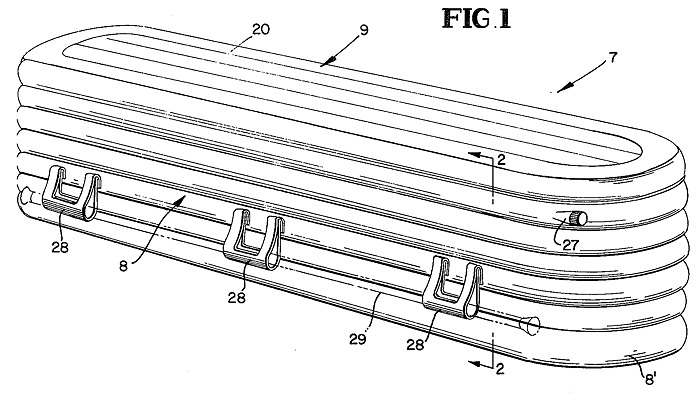
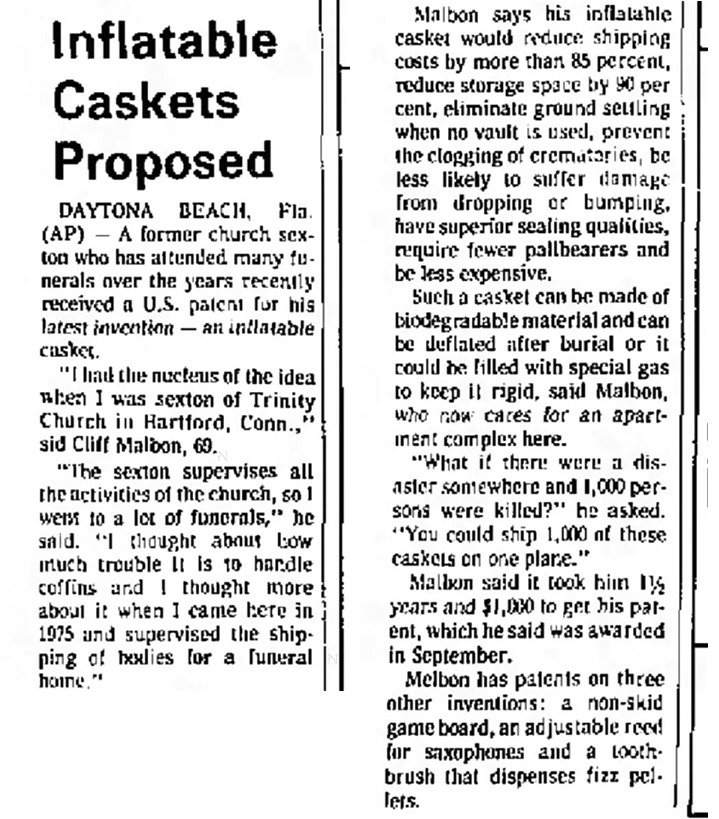
Naples Daily News - Dec 11, 1977
Posted By: Alex - Fri Jun 01, 2018 -
Comments (5)
Category: Death, Inventions, Patents, 1970s
Belly Bongo
From the mind of inventor George Fullerton came, in 1973, the Belly Bongo.A rapid-motion twist produces an up-tempo pong-pong-pong-pong. With proper body movements, Belly Bongo makes you your own bump-and-grind drummer. A checker in the electro-mechanical division at Honeywell, Fullerton spends his evenings designing and tapping away at product prototypes in his Largo home. Belly Bongo is the latest in a long line of toys and crafts he's invented. Fullerton explains his wealth of entertainment ideas as a direct result of the lack of hair on his head. "It's all because I'm bald-headed," he says with a laugh, "If you're bald-headed, it means you're crazy."
Tampa Bay Times - Apr 22, 1973

Springfield News-Leader - June 16, 1995

Tampa Bay Times - Apr 22, 1973
Posted By: Alex - Fri May 25, 2018 -
Comments (3)
Category: Inventions, Toys, 1970s
Rock ‘n’ Roll Underwear
From Omni magazine (Aug 1981): "The latest discotechnological breakthrough is an item called Rock and Roll Hot Pants. By wiring your shorts or panties to a stereo speaker with a 15-foot cord, which relays the music to a two inch disc on your waistband,”you get an incredible tingle all over your body,” claims inventor David Lloyd."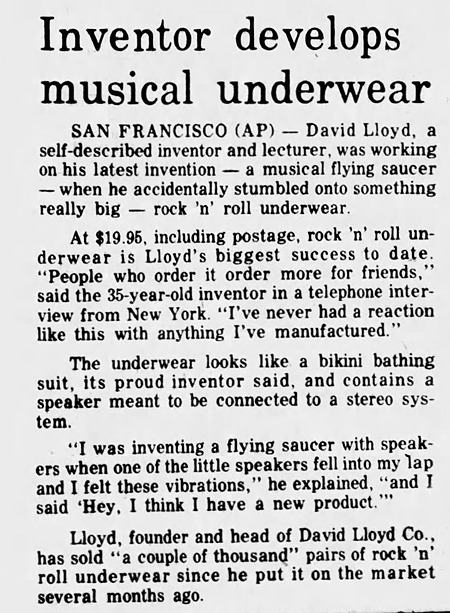
Santa Rosa Press Democrat - Jan 27, 1981
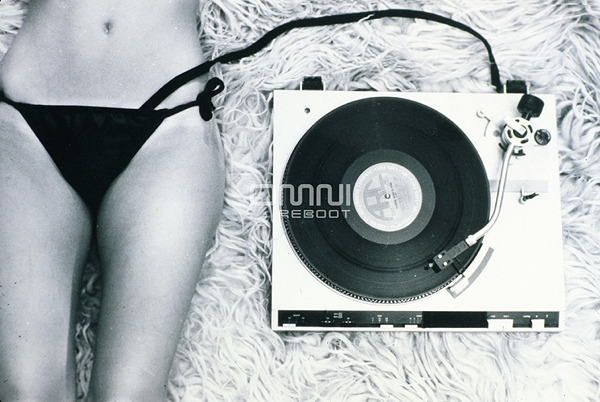
Omni magazine - August 1981
Posted By: Alex - Sat May 12, 2018 -
Comments (6)
Category: Inventions, Music, Underwear, 1980s
Thump Pad - pothole solution
Seems like an interesting solution to potholes, but I'm curious how well these would work in a real-world setting. For instance, would people wander away with them, just because they could? And would this temporary solution end up as the permanent solution?More info: The solution to potholes? (wkyc.com)
https://www.yeupatchtechnologies.com
Posted By: Alex - Sat Apr 28, 2018 -
Comments (1)
Category: Inventions, Motor Vehicles
Munch Meter
An invention that measures how much a cow has eaten by recording the motion of its head while it eats.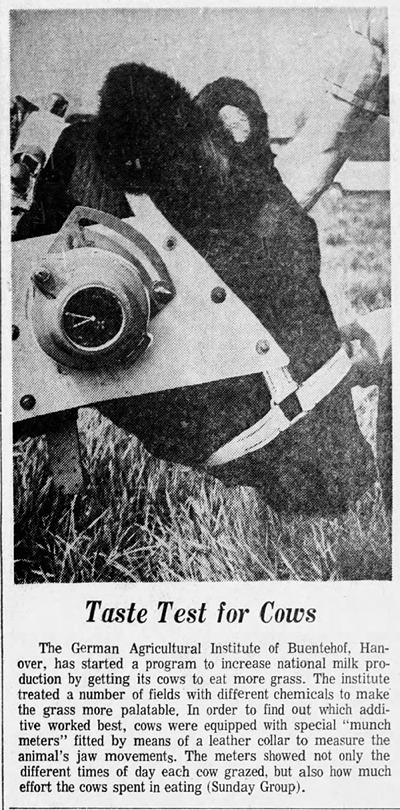
Hartford Courant - Sep 14, 1972
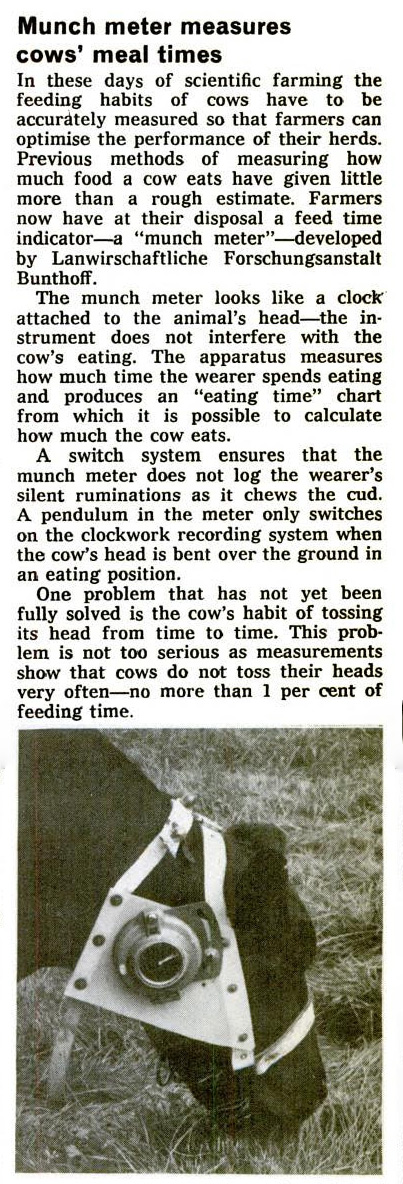
Posted By: Alex - Wed Apr 18, 2018 -
Comments (1)
Category: Animals, Farming, Inventions, 1970s
Inflatable Underpants
I wonder where Katsuo Katugoru was during the big 2011 tsunami... if he got a chance to use his invention.
Orlando Sentinel - Aug 23, 1998
Update: I've concluded that Katsuo's inflatable underpants were fake news. Never happened. Columnist Mark Gibbs called it out as such in his May 4, 1998 column in Network World magazine. He also offered some prescient thoughts about the emergence and possible consequences of the fake-news phenomenon:
— Unsubstantiated story carried March 3, 1998, by London's Daily Telegraph, National Public Radio and many other serious news organizations.
What's interesting about this story (other than the weirdness) is the coverage the story received. According to some reports, The Associated Press sourced it, but no one has been able to find any AP reference. You have to wonder how the likes of NPR and the Daily Telegraph could run with it.
What the event illustrates is a phenomenon that will become increasingly common — the Internet raising gossip, jokes and misinformation to the status of truth. This is what I call "anti-data." Anti-data is not the opposite of data, rather it is the stuff that dilutes and invalidates the data you need.
Part of the reason anti-data exists is because the Internet supports the rapid transfer of huge amounts of what we'll call, for the sake of argument, "news." Way back in 1967, Marshall McLuhan noted the consequence of speedy news delivery as a general trend of modern media in "The Medium is the Message: An Inventory of Effects," (p. 63):
Information pours upon us, instantaneously and continuously. As soon as information is acquired, it is very rapidly replaced by still newer information. Our electrically configured world has forced us to move from the habit of data classification to the mode of pattern recognition.
The Internet amplifies this effect and applies it not only to news but also to intelligence about markets, people and business concerns in general.
To corporations, this should be a great concern. As your employees begin to rely on pattern recognition over data analysis, generally their judgment will become less consistent.
Their correct conclusions may well become more accurate, but their wrong ones will tend toward the catastrophic. These extremes might average the same as prior judgments, but the fact that the highs are stellar and the lows, abysmal, will induce chaotic behavior.
Posted By: Alex - Tue Apr 17, 2018 -
Comments (5)
Category: Inventions, Underwear, 1990s
The Dieter’s Conscience
Carol Kiebala invented a dieting gadget that would verbally chastise you whenever you opened the refrigerator door.I guess that would encourage you to eat more potato chips, and other non-perishable snacks.

The Arlington Daily Herald - Sep 22, 1977
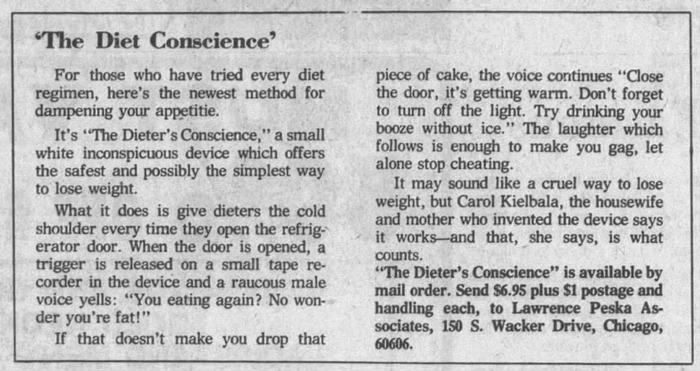
Fort Lauderdale News - Nov 6, 1977

Tallahassee Democrat - Sep 21, 1977
More in extended >>
Posted By: Alex - Thu Mar 29, 2018 -
Comments (5)
Category: Inventions, 1970s, Dieting and Weight Loss
Automatic Pancake Machine
Invented by J. Clarence Sebring of Dundee, New York, circa 1990. It could make one pancake every seven seconds.
Elmira Star-Gazette - Jun 5, 2006
Posted By: Alex - Tue Mar 20, 2018 -
Comments (2)
Category: Food, Inventions, 1990s

| Who We Are |
|---|
| Alex Boese Alex is the creator and curator of the Museum of Hoaxes. He's also the author of various weird, non-fiction, science-themed books such as Elephants on Acid and Psychedelic Apes. Paul Di Filippo Paul has been paid to put weird ideas into fictional form for over thirty years, in his career as a noted science fiction writer. He has recently begun blogging on many curious topics with three fellow writers at The Inferior 4+1. Contact Us |




